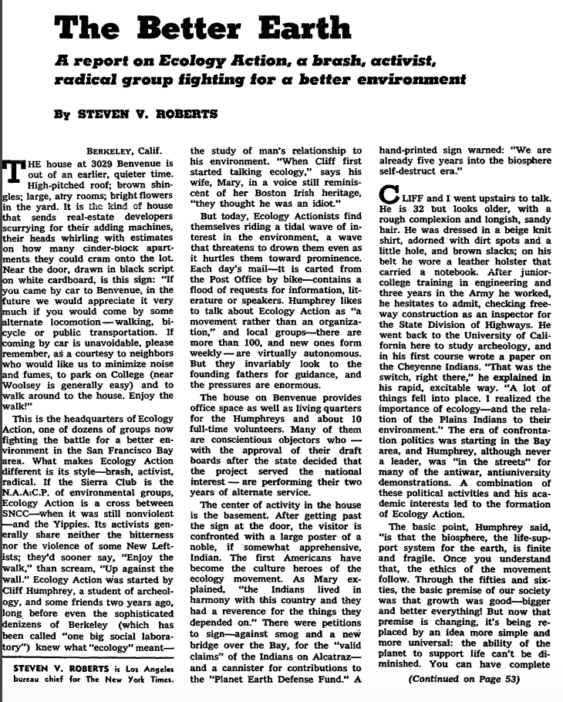In the spring of 1970, the New York Times‘ Steven Roberts reported in depth on the Bay Area’s environmental movement, focusing on Ecology Action, which Roberts called the “moral touchstone” of the movement.
The piece highlighted how politics, culture, race, economics, and conservationism intersected in the movement, while at the same time introducing the Humphreys and the Ecology Action house at 3029 Benvenue to a national audience.
The piece draws out how, on a very practical level, antiwar activism helped fill out the ranks of the ecology movement: many of Ecology Action’s ten full-time volunteers were conscientious objectors who had applied to fulfill the terms of their two years of alternate community service by volunteering for Ecology Action. Their draft boards had given their approval to the volunteer work, deciding that the project “served the national interest,” in Roberts’s words — a sign that the direct-action wing of the environmental movement was hardly viewed with the same hostility as other radical parts of the Movement, such as the Black Panthers.
